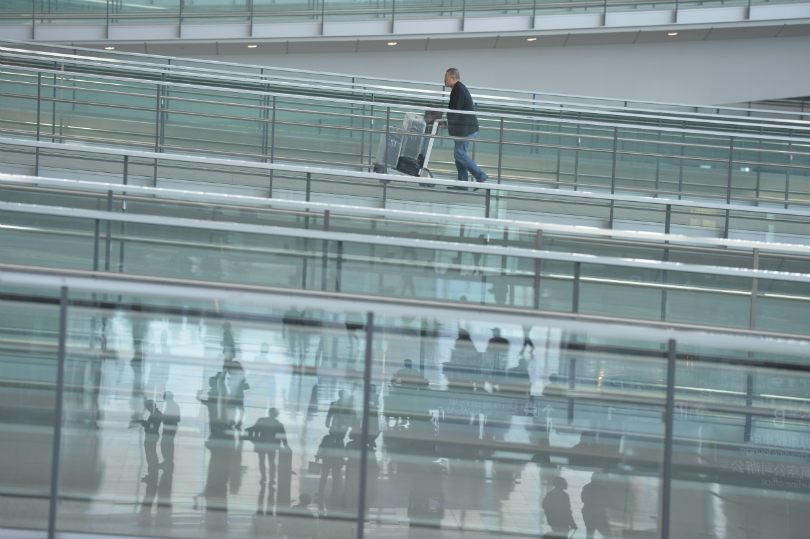The radar detection of the new air traffic management system (ATMS) malfunctioned around 80 times and issued 30 false alarms in its first month of operation, FactWire can reveal.
The ATMS, also known as AT3, has been beset with problems since its launch in mid-November last year. The 80 incidents include the detection of “ghost targets” (non-existent aircraft), “target drop or label drop” (disappearance of aircraft or flight details) and “split tracks” (an aircraft with two flight paths), according to informed sources from the Civil Aviation Department (CAD).

The sources told FactWire that US-based manufacturer Raytheon had admitted that the problems – which have not been made public – lay in the system’s algorithms.

In late November, the CAD released an internal memo warning staff against sharing any confidential or restricted information with the public, and limited front-line air traffic controllers’ access to staff duty records known as “electronic logs.” Front-line controllers did not initially know about problems faced by other staff and only learned of incidents later through word-of-mouth.
Multiple sources have told FactWire that the ATMS detected both “split tracks” and “ghost targets” at least 30 times, as well as 20 instances of “target drop or label drop,” in its first month. Those faulty detections led to the release of “predictive conflict alert” and “conflict alert” alarms warning the staff about a risk of “loss of separation” and thus a potential aircraft collision, at least 30 times.

On November 18, the ATMS detected proximity between aircraft NX226 flying from Macau bound for Hangzhou and a “ghost target” non-existent aircraft, at an altitude of 20,000ft. The ATMS then released the predictive conflict alert and conflict alert, and the alarm lasted for more than 1 minute. Sources said controllers instructed NX226 to adjust its course. The pilot told them that no other aircraft could be seen or detected by the traffic collision avoidance system (TCAS). FactWire tracked NX226 using a monitoring platform that shows live air traffic using round-the-clock satellite and radar data, and found that the aircraft had suddenly turned south at an altitude of 19,000ft and resumed its original flight path at 23,000ft.
On November 26, about 6NM east of Hong Kong airspace waypoint ABBEY situated east of the Hong Kong International Airport, the ATMS detected a non-existent aircraft at an altitude of 13,000ft, where Hong Kong-bound aircrafts HX255 and CX367, flying out from Taipei and Shanghai respectively, were situated. A conflict alert was issued for almost one minute.
On December 12, the system detected a “ghost target” at 40,000ft, where Hong Kong-bound aircraft JL31 flying from Tokyo and Bangkok-bound aircraft NH847 from Tokyo were. A conflict alert was issued.

Director-General of Civil Aviation Simon Li Tin-chui held a press conference on November 20 to explain the 12-second disappearance of an aircraft on the radar screen. Li admitted that the duration of disappearance was “a relatively long time.”
He also said the ATMS was using a multi-radar tracking system (MRT) to merge radar signals but the quality was affected by environmental factors such as obstacles or other interference.
On November 25, Assistant Director-General of Air Traffic Engineering Services Richard Wu Chi-kwong said radar signals could be affected by clouds, lightning or the radar coverage, during a media visit to the Air Traffic Control Centre arranged by the CAD. Wu also said large objects such as ships may also interfere with the radar signals, causing “ghost targets” or “split tracks.”
But a group of retired electronics engineers disagree. They contacted FactWire to point out that the old and new systems process signals from four radars, which have always been relatively stable. They added that the “CAD is trying to fool the reporters who are not familiar with the ATC [air traffic control] system and deliberately misleads the public about the real causes.”
The group said it would be easy to establish whether the system itself or external factors were to blame, simply by playing back video recordings of both systems and analyzing whether the same irregular situations occurred.

FactWire confirmed with experienced CAD sources that engineering staff had watched video recordings of some incidents concerning the old ATMS during the investigations of the latest problems. In around half of the incident playbacks from the old system, the sources said, there were no signs of “ghost targets” or “split tracks,” making it hard for the staff to deny the new system was to blame.
Informed sources from the CAD told FactWire that in December last year, Raytheon made a presentation regarding the new system’s teething problems. On the detection of “ghost targets,” “target drop or label drop” or “split tracks,” Raytheon admitted that the algorithm had not always integrated all radar signals, and vowed to improve it through software upgrades.

But air traffic controllers say that in the three months since the launch, the number of problems and false alarms have not significantly reduced. The old ATMS conflict alert system was very reliable, they said, and “the number of false alarms was extremely low, the percentage [of false alarms] being only around 1%.” The conflict alerts were wrongly released only one to two times a year under the old system, they said, and the current problems were putting staff under severe pressure, with not enough support from management. As a result, some staff had lost confidence in the ATMS and were more likely to dismiss a predictive conflict alert, believing it to be just a false alarm.
Senior CAD management convened a meeting in December to discuss the issues, and management members have called for the false alarms to be more closely monitored. In an ATMS expert panel meeting in mid-January, members of the panel also mentioned the problem of false alarms. The management apparently responded by saying that it “takes a very long time” to improve the alert system.
